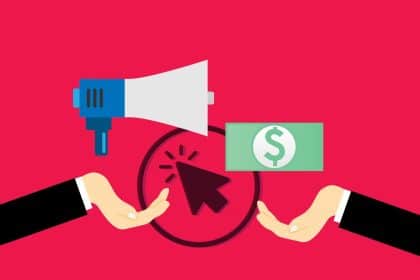A call to action is one of the most important parts of your marketing campaigns. Not only does it guide people to a certain action, but it can actually make the difference between converting a customer and losing a sale.

What is a Call to Action?
A call to action, also commonly referred to as a CTA, is a digital strategy designed to encourage website visitors to take a certain action, like subscribing to a newsletter or purchasing a product.
A CTA is a short piece of text that directs an audience to click a button or link. After clicking on the call to action, a user is directed to a landing page where they learn about the benefits of purchasing your product or service. CTAs can appear as banners, pop-up boxes, or a call-to-action button.
Ways to Use CTAs
A CTA can be used for a variety of purposes like:
Building a customer base: Directing people to your website allows your company to build brand awareness.
Making sales: A CTA is an essential part of any sales funnel. A sales funnel starts with creating interest and awareness around a company and eventually leads to a sale. The more effective your CTA is, the higher your conversion rate will be.
Generating leads: CTAs can be used to identify target audiences and then generate leads. Leads are people who have an interest in a company’s offers and have a chance to become customers.
Creating direct paths to a product: A CTA is the easiest way for someone to access your website. With the simple click of a button or link, a customer can be taken to a landing page and easily make a purchase.
Where to Put a CTA
Your website
You should make sure there are CTAs all around your website in different sections to give people prime opportunities to click through and take your desired action. You can include CTAs in blog posts on your website. If you don’t have one, we suggest starting one to drive more traffic to your website.
Email Campaigns
Using the email list that you have compiled, send out an email blast to all of your subscribers. You can then place CTAs in the body of your email.
Social Media
Running sponsored ads on social media platforms like Facebook is a great place for CTAs. A “learn more” button is a great example of what you could put for a social media ad CTA.
Google is a great place to advertise and when you run a Google advertisement, make sure to include your phone number. Google has a click-to-call button on their mobile ads, so a customer is able to easily tap a call link to make it easy to reach you.
Writing an Effective CTA
Be clear
Writing a CTA is all about being clear and concise. Since you don’t have a ton of space in your ad, it’s important to get straight to the point. You should let your audience know exactly what you want them to do.
If you run an ecommerce website, you should start your CTAs with words like “order” or “shop.”
For a newsletter or white paper, it is a good idea to start your CTA with words like “subscribe” or “download.”
If you want someone to request more information, use phrases like, “fill out a form for…”
Provoke emotion and enthusiasm
Creating enthusiasm is a great way to encourage strong responses from your audience. If your CTA is emotional or enthusiastic, then your audience will be too. For example, a CTA like, “Buy now and take 70% off!” provides a massive benefit but also excites a customer about a discount.
For someone looking for a new home, a CTA like “Buy your dream home today!” will excite them about the next step in their life.
Adding exclamation points are a small but effective element that provokes enthusiasm.
Give them a reason to take action
Consumers are always wondering what’s in it for them. Will it help them lose weight or save money? This will tie in with your value proposition or your unique selling point (USP). Your unique selling point is a crucial aspect of acquiring leads, so creating a CTA that ties into your USP is an effective way to increase clicks.
A great example of this is a CTA like, “Call today to get a free quote!” You have started with the action you want the user to complete (call) and also gave them a reason why they should follow through (a free quote.)
Use FOMO
Fear of missing out, also known as FOMO, is a great tactic to use when it comes to writing CTAs. When people think they could lose out on an opportunity that may not come again, they are more likely to click your button.
A great time to create a sense of urgency and leverage FOMO to your advantage is when you have a sale or promotion that won’t last forever. Messages like, “Buy today! Sale ends tomorrow!” or “Buy now while supplies last!” are tough to ignore.
Get Creative
Like any ad copy, it’s important to keep your CTAs fresh. A/B testing is a tried and true way to see which CTAs bring you clicks and which aren’t.
PPC advertising is a true game of trial and error, and your call-to-actions are as well. Something that may look or sound great on paper might not work best for your business. The only way to know for sure if something is working for you is to test it. Therefore, testing your CTAs and being creative with your options is an essential part of the CTA process.



